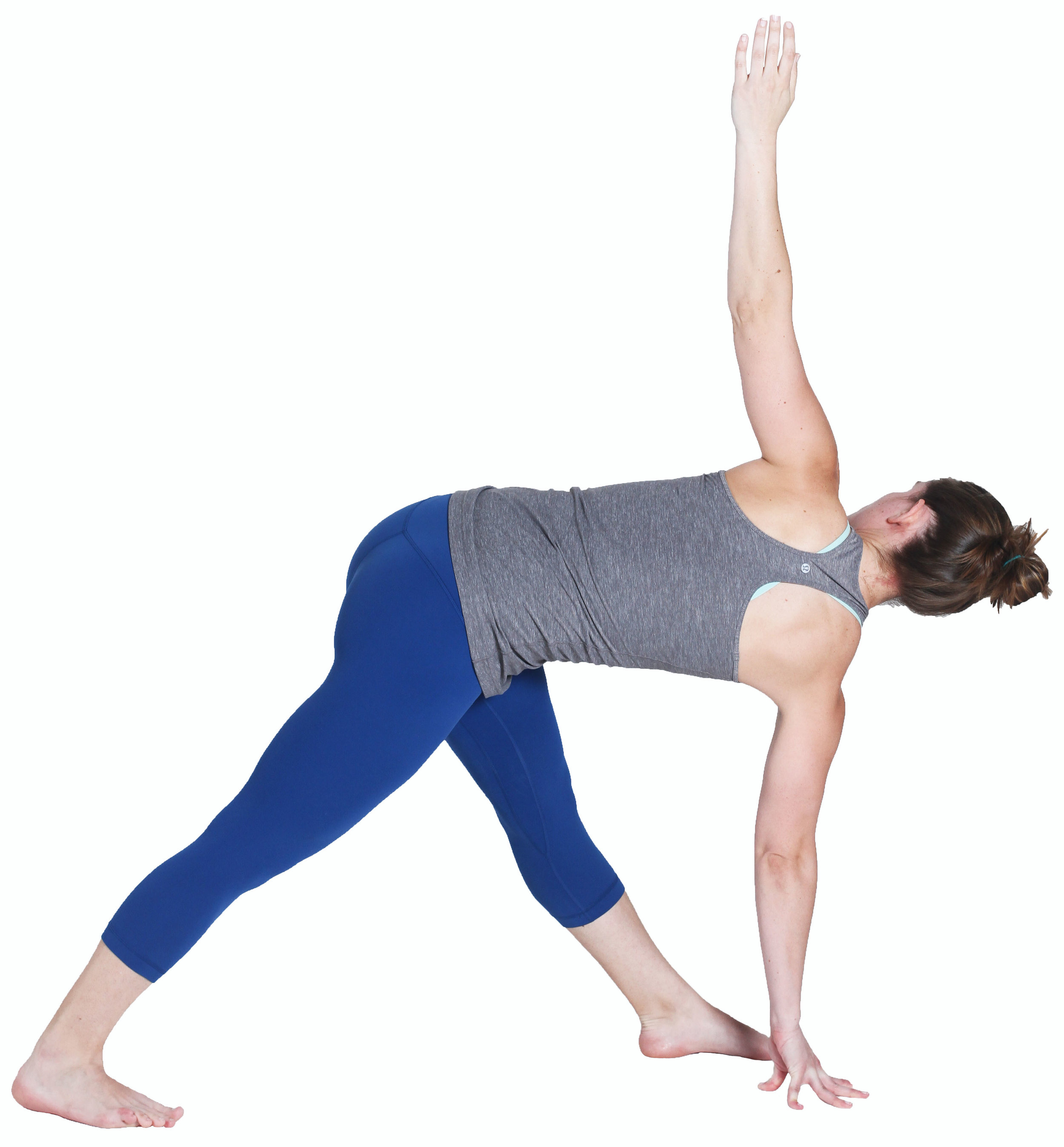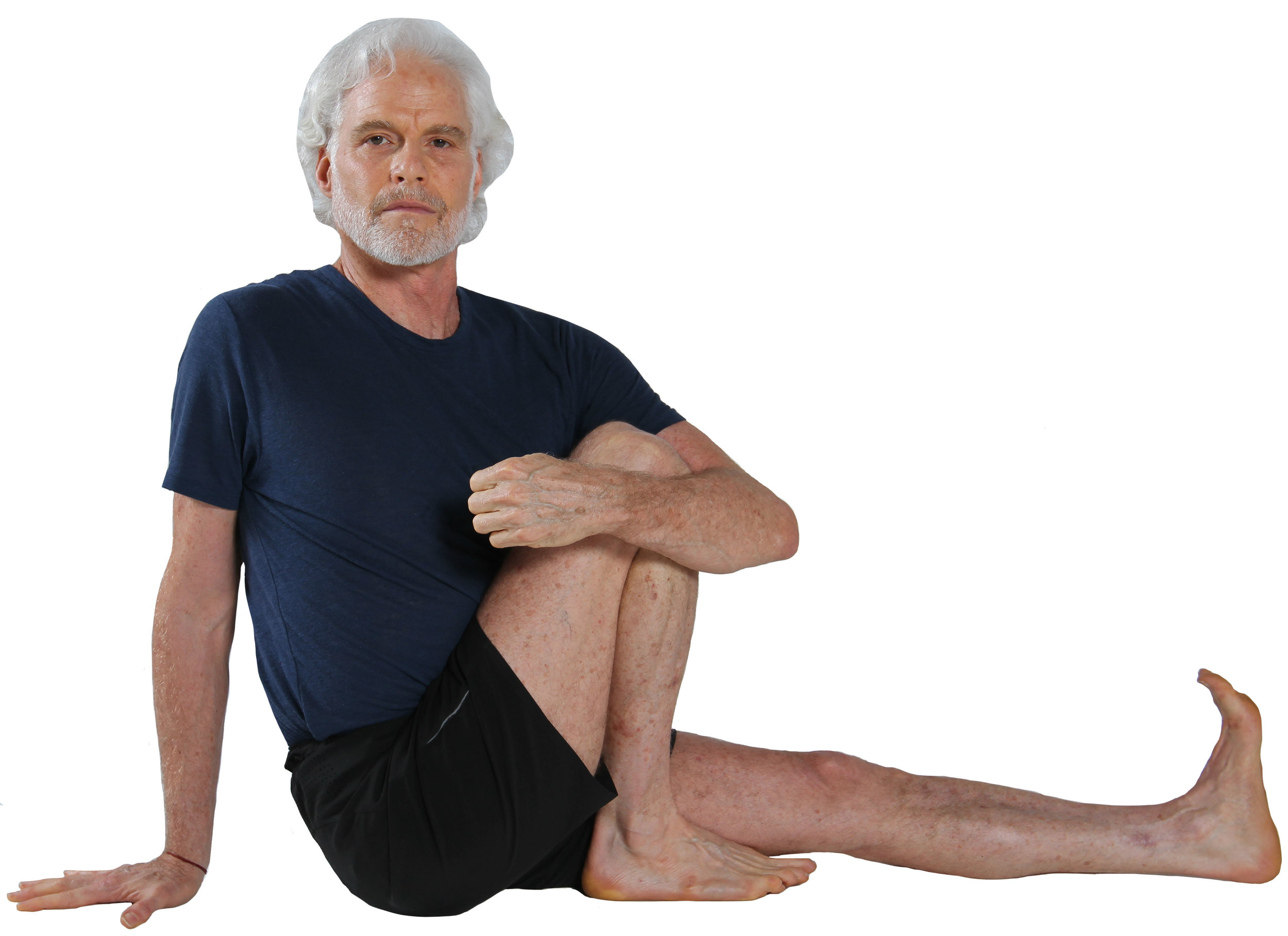Twists don’t have to tie you up in knots! In this blog post, I’ll review the anatomy of twists, discuss the dangers that people fear from twists (and the scientific literature around that danger), and suggest five twists that can be helpful for your yoga practice. Finally, I’ll discuss the benefits of twists (both real and imagined). If you’re not into the anatomy portion, feel free to jump to the numbered twists below.
What is a twist (anatomically speaking)?
Twists are ubiquitous in most yoga practices. A twist is a pose in which there is rotation of the torso. Rotation of the torso changes the relationship of each vertebra to the vertebra above and below through the combined action of a series of muscles. Your vertebral column does not rotate in a uniform manner, so the change in relationship won’t be uniform, but will depend on several variables. Some areas, such as the cervical and thoracic sections, have more mobility in rotation. Others, such as the lumbar region, have less mobility. The degree of muscle action in twisting is complicated and varies depending on vertebral position (neutral, lateral bend, flexion or extension), body position (sitting, standing or supine), level of physical effort, and degree of resistance to the twist.
The main muscle of spinal rotation is the internal oblique on the ipsilateral side, which is the side corresponding to the direction of the twist. For example, when you twist towards your right side, the internal oblique on the right side is the primary muscle that is responsible for creating this movement. Other muscles on the ipsilateral side that contribute to rotation are the quadratus lumborum, psoas, and iliocostalis. On the contralateral (opposite side), the external oblique assists in rotation.
Are twists dangerous?
Although there has previously been a link suggested between habitual twisting or trunk rotation and chronic lower back pain, a literature review of the topic reveals that twisting is not a statistically significant factor in lower back pain. It is likely that the previous studies which suggested a causal link were actually seeing the association between bending and/or bending combined with twisting rather than twisting alone.
It is interesting that those suffering from lower back pain have reduced recruitment of their internal oblique muscles during trunk rotation. So it may be that in one way to reduce lower back pain is to strengthen the internal oblique muscle through regular, controlled twisting with the torso upright. Yoga provides a number of different options for twists, ranging from gentle to more vigorous, depending on your own body’s needs.
Recommended twists for your practice
Here are a few twists that you might find helpful:
1. Restorative twist
This variation is accessible to most people, and a great pose to start with. To set up, use a yoga bolster (or a small pile of pillows if you don’t have a bolster). Sit alongside the bolster with your bottom thigh and hip in contact with the bolster. Now turn your torso towards the bolster with one hand on either side. Take a deep breath, then lower your torso down onto the bolster with your head facing in the same direction as your knees. Stay here for 3-6 minutes. Repeat this with the bolster on your other side.
2. Reclining twist
This is also a gentle twist. Lie flat on your back and draw your knees in towards your chest. On an exhale, lower your legs over to the right side, working to maintain a 90 degree angle at your hips if possible. Extend your arms out to either side, softening as much as you can around the sides of your waist and your rib cage. It’s ok if your opposite shoulder is not in contact with the ground. Your head can remain neutral and facing the ceiling, or you can turn your head away from the direction of your legs. Hold for about 15 breaths, then repeat on the other side.
Photo by Steve Clarke
3. Revolved triangle pose
This is a more active pose than the previous two. Begin standing in tadasana. Step your left foot towards the back of your mat, making sure that the left foot stays on the left side of the mat, and the right foot on the right side of the mat. This will help to ensure proper hip placement for the twist. Keeping your spine long and extended, bring your left hand down to a block or the floor and open your twist out to the right side, extending your right arm towards the ceiling. Try to keep your front leg straight, and the front hip reaching towards the back of your mat. Hold for 5-10 breaths and then repeat on the other side.
4. Seated twist
A basic seated twist is to sit cross-legged with a blanket or bolster under your hips. Make sure that your pelvis is tilting forward and your spine is lengthening towards the ceiling. On an exhale, rotate towards the right side bringing your right hand to the floor or to a block behind you. Place your left hand on your right knee or thigh. Take 10-15 breaths here and then do the same on the other side.
There are several variations on a seated twist that you can take depending on your comfort level . For example, bend one knee up with the sole of that foot on the floor and twist towards the bent leg. You could also take a twist from baddhakonasana (bound angle pose), or the seated pose of your choice.
5. Twisted lunge
This is another standing pose. From tadasana, step your left foot towards the back of your mat and keep the toes pointing forward and the back heel off the floor. Bend your front knee. For an unsupported twist, open your arms wide and turn towards the right side. To leverage yourself a bit more in the twist, place your palms together at heart center and bring your left elbow to the outside of your right thigh. Gently press your palms together to gain some depth in the twist. Hold for 5-10 breaths and then reverse to twist the other side.
Benefits of twists (real and imagined)
Your yoga practice can benefit your health in many ways. Regular twists can promote a healthy lower back. Incorporating these poses into your daily practice can offer you a greater sense of ease, especially if you sit at a desk, or are on your feet for long periods of time.
Although there is ample evidence that twisting can strengthen some of the muscles that promote lower back health, there are many claims about twisting that can be debunked. For example, twists do not ‘detox’ the body. Your liver and kidneys do that. Twists do not improve circulation to the digestive tract, promoting digestion or a generalized “healing.” There is no evidence to support that claim and the digestive tract is already well vascularized.
There is evidence that a regular yoga practice can benefit those suffering from irritable bowel syndrome (IBS). The mechanism through which this works is likely through increased vagal tone, which promotes digestive functions. Yoga has been shown to increase vagal tone (parasympathetic activity), which can help IBS patients, as well as those suffering from epilepsy, depression, and more. These benefits are seen due to the calming effect that yoga has on your nervous system, not on specific actions in twists. Likewise, they are benefits that help to reduce the presence and intensity of symptoms, which is certainly a benefit. However, reducing symptoms is not the same thing as curing a disease.
If you teach yoga, make sure that you are sharing the true benefits of the practice, not imagined benefits that don’t have research to back them up! Making claims that overstate the truth or that are not based on scientific evidence is not just irresponsible for your clients, but can harm the reputation of yoga as a whole.





